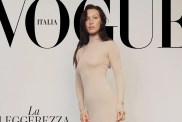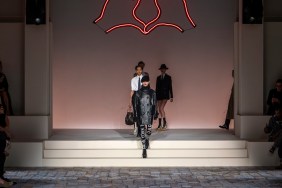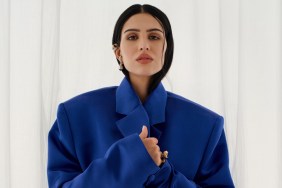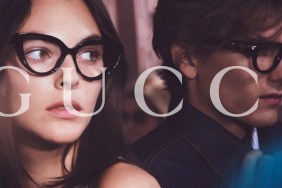By Joelle Diderich
Judging from the amount of glamorous parties and store openings in Paris this week, you could be forgiven for thinking the economy is thriving–prompting some commentators to say the fashion industry is having a “Marie Antoinette” moment.

So it was a pleasure to see real clothes for real women, and with real sales potential, from British designer Stella McCartney on Thursday.


Elongated lapels gave a fresh new proportion to smart tailored suits inspired by the designer’s training on Savile Row, the London hub of made-to-measure suits. McCartney said that although she took a grounded approach, there was room for fantasy even in times of economic strife.
“At times like these, sometimes it needs to get less real. I think you need to just find a balance,” she told The Associated Press backstage, where she juggled looking after her three young children and greeting guests.

“I mean, in the fashion industry, it wouldn’t be very exciting if it was all too real. I think that mine stands out, possibly, in this particular week as being one of the more real ones, but I think you look for that in Paris, the unreal,” she added.

Nonetheless, the designer’s concern with ethics stands out at a time when luxury brands are throwing lavish fetes that appear out of tune with the threat of recession hanging over the U.S. economy.

Even the backdrop of her show was recyclable: a felt tapestry by critically acclaimed British artists Jake and Dinos Chapman.
“I always find something slightly unsettling about how in the fashion industry, we always spend so much money and time on these shows, and then they all get thrown away. So for me, I wanted to do something that would have a little more longevity,” McCartney explained.

The true test is the bottom line, and hers shows that customers are in tune with her proposition. The Britain-based division of Stella McCartney announced on Wednesday that profits grew almost sixfold to just over 1 million pounds, or $2 million, in the year ended Dec. 31, 2007.
Glenda Bailey, editor-in-chief of the U.S. edition of Harper’s Bazaar magazine, said that fashion offered a glimmer of optimism.

“In troubled times, historically, fashion has always shown its most glamorous side. Every person wants to dream,” she told The AP.
“Having said that, fashion is also a business and it’s very important to run an efficient business. I think what people want right now are ideas, they want optimism, and I think it’s really good that so many of the designers have looked to the future with a very positive view.”
Images courtesy of the Fashion Spot forums.








